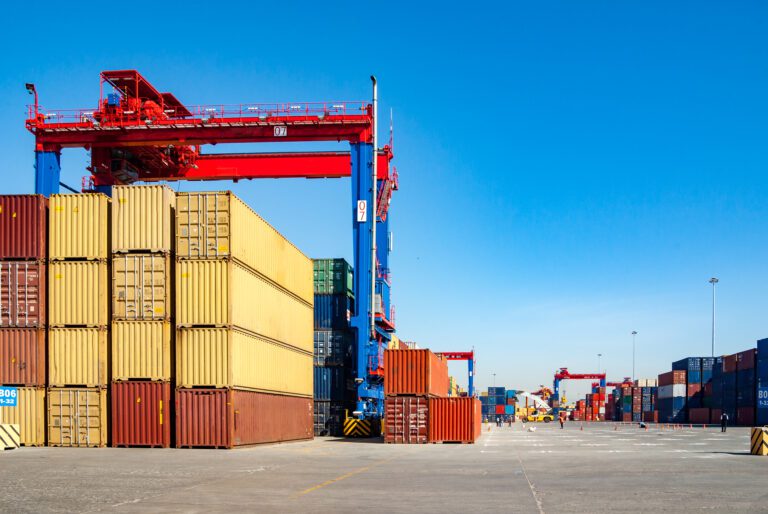
Key Takeaways
- Overreliance on single shipping suppliers or global shipping routes increases supply chain vulnerability.
- Disruptions like geopolitical conflict, port congestion, or natural disasters can severely delay shipments.
- Diversifying suppliers and international shipping routes increases flexibility and resilience.
- Strategic diversification can lead to cost savings, better risk management, and competitive advantage.
- Tools like supply chain mapping, logistics software, and data analytics support smarter decisions.
In today’s volatile global trade environment, supply chain resilience is no longer a luxury—it’s a necessity. Businesses that rely on a single supplier or limited global shipping routes expose themselves to significant operational and financial risk. From pandemic-related shutdowns to geopolitical tensions and extreme weather, disruptions can strike at any point in the supply chain.
As a result, companies across industries are shifting their strategies toward diversification. By broadening their network of shipping suppliers and optimizing international shipping routes, businesses can build more adaptable, cost-effective, and future-ready supply chains. In this blog, we’ll explore why diversification matters, the benefits it brings, and how your company can put this strategy into action.
The Risk of a Single Point of Failure
It’s tempting to streamline supply chains around a trusted supplier or efficient trade lane. But while this may offer short-term convenience or cost savings, it often leads to long-term risk.
Common Disruption Scenarios:
- Geopolitical Tensions: Trade disputes, sanctions, or military conflict (e.g., the Russia-Ukraine war or tensions in the South China Sea) can abruptly sever trade links.
- Port Congestion: Overcrowding at major ports—such as Long Beach, Rotterdam, or Shanghai—can delay shipments by days or weeks.
- Natural Disasters: Earthquakes, hurricanes, floods, or wildfires can shut down critical production hubs or transport routes.
- Factory Shutdowns: A COVID outbreak or labor strike at a sole-source manufacturing plant can halt product flow entirely.
- Regulatory Changes: Sudden policy shifts can introduce new tariffs, inspections, or trade restrictions.
When your supply chain has a single point of failure—be it a supplier, transport lane, or port—any disruption can cause a ripple effect, impacting inventory levels, customer satisfaction, and your bottom line.
The Case for Diversification
Diversifying your shipping suppliers and global shipping routes is one of the most effective ways to increase supply chain resilience. It allows your business to respond faster and more effectively to disruption.
Notable Benefits:
Reduced Risk
Spreading your supply chain across multiple vendors and routes minimizes the impact of any one failure. If one port is congested or one supplier faces issues, you can quickly pivot to alternatives.
Greater Flexibility
With diversified options, your team can adjust lead times, sourcing schedules, and delivery methods based on current conditions—keeping your operations agile and responsive.
Cost Optimization
Working with multiple vendors and route planners can increase competitive pricing and reduce overreliance on high-cost suppliers. Diversification also helps you avoid emergency shipping premiums when disruptions strike.
Improved Customer Service
Stable inventory levels and consistent delivery performance—even during global disruptions—translate into better service and stronger customer loyalty.
Scalability and Growth
A flexible, diversified supply chain is better equipped to scale with your business as you expand into new markets or introduce new product lines.
Strategies to Diversify Your Supply Chain
Map Your Current Supply Chain
Start by identifying all your key suppliers, transportation routes, and distribution hubs. Evaluate where bottlenecks, delays, or overreliance might exist. Tools like supply chain mapping software can offer visual clarity and help you prioritize areas for diversification.
Qualify Alternative Suppliers
Research and qualify backup or secondary suppliers in different geographic regions. Consider both nearshoring and offshoring options. Establish contracts and quality control processes with them—even if you don’t immediately shift volume—to ensure they’re ready when needed.
Build Multimodal Transport Plans
Incorporate a mix of air, sea, rail, and truck transport into your logistics strategy. Relying solely on ocean freight may seem efficient, but having alternative international shipping routes can keep goods moving even when a specific mode is disrupted.
Optimize Routing with Technology
Use logistics software and real-time analytics to monitor shipping conditions and dynamically reroute freight based on congestion, weather, or geopolitical events. This helps avoid delays and increases supply chain agility.
Leverage Regional Distribution Hubs
Instead of funneling all shipments through a central location, consider establishing regional hubs closer to your key markets. This decentralization can significantly reduce last-mile delays and improve service levels.
Stay Informed on Trade Policy
Monitor changes in trade regulations, tariffs, and customs requirements. Staying ahead of policy shifts can help you adapt faster and avoid sudden compliance issues that may affect specific suppliers or routes.
Real-World Example: Lessons from the Suez Canal Blockage
When the Ever Given container ship blocked the Suez Canal in 2021, more than 400 ships were delayed, affecting billions in trade. Companies with diversified routes through the Cape of Good Hope or rail links across Eurasia were able to reroute cargo and maintain delivery timelines. Others, reliant on that single trade corridor, faced costly delays and cascading inventory shortages.
This event highlighted just how vulnerable concentrated global shipping routes can be—and why alternative routing options are critical.
How Allison Shipping Helps You Diversify and Succeed
At Allison Shipping, we specialize in helping businesses build resilient, scalable, and responsive supply chains. Our global network of trusted shipping suppliers and multimodal partners enables us to offer diversified routing solutions tailored to your specific needs.
We support clients with:
- Route planning across ocean, air, and inland modes
- Sourcing alternative carriers and backup vendors
- Risk assessment and real-time shipment tracking
- Customs compliance and regulatory advisory
- Supply chain consulting and strategic planning
We don’t just move your goods—we future-proof your logistics.
Positioning Your Business for Resilience
In a world where change is the only constant, companies that diversify their international shipping routes and shipping suppliers are better equipped to handle whatever comes next. Whether it’s geopolitical conflict, natural disaster, or a factory shutdown, a diversified supply chain can be the difference between a temporary setback and a full-blown crisis.
Don’t wait for disruption to force your hand. Start evaluating your supply chain today—identify gaps, explore options, and develop a plan that positions your business for long-term success.
Partner with Allison Shipping to design a logistics strategy built for resilience, growth, and global reach.


